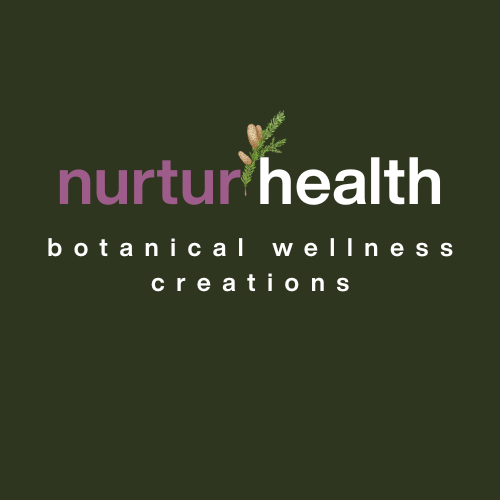From our homes to workplaces to the air we breathe and water we drink, toxins seem to be everywhere in our modern world.
While we do have very little control over the chemical exposure out there in the world and we may not be able to eliminate all toxins and their sources, there are steps we can take to reduce our toxic load and help our bodies to better handle these substances. Yes, there are safer alternatives out there - we simply have to be aware of the risks, prioritize, and implement the right strategies.
Here are 6 practical ways to reduce exposure to environmental toxins:
1. Swap out your beauty and personal care products
Our skin is the largest organ and it absorbs everything we slather and rub on it. Once considered harmless in small amounts, many ingredients are far from it. It’s the cumulative effect of all the chemicals combined in our products that is rarely tested and accounted for.
“…extremely low levels of toxic chemicals, including many of those used in personal care products, may have serious effects on metabolism, reproductive development, and risks for later life disease.”
You can and should do your own research in order to decide for yourself whether you want to use a particular ingredient on your skin or in your home. Determine the safety of products you own by searching them in a clean beauty database Environmental Working Group or Think Dirty App If your product receives a mediocre score or worse, consider tossing it. Because who wants to absorb phthalates, parabens and other hormone disruptors?
A good first step is replace the products that are in contact with your skin the longest - a deodorant or moisturizer. You can then start slowly phasing out your products as you run out of them. Transition to natural beauty products doesn’t happen overnight. It’s a journey of commitment to your health. Not only will the natural body products make your skin happy, but also help the planet and you feel good on the inside too!
Pay attention to greenwashing. Products with ‘nature/tree/flower’ images can be misleading to be greener, but actually aren’t. Develop a habit of always meticulously checking the ingredients!
Your mindset matters too - you do not need to fit in someone else’s idea of beauty - decide do it for the sake of your dear self!
2. Swap out your cleaning products
Researchers tested a variety of popular household cleaning products and found 133 volatile organic compounds (VOCs) in them, even when labeled ‘green’, ‘natural’ and ‘organic’. VOCs have been shown to cause eye, nose and throat irritations, headaches and more.
Look for more natural options, you definitely don’t need blue or green liquids to clean your mirrors and windows. I usually DIY my products with baking soda, vinegar, castile soap, hydrogen peroxide, lemon, salt and essential oils.
Because, please tell me what group of chemicals makes the smell of ‘Ocean Breeze’, ‘Fresh April’ or ‘Meadow Blossom’?
3. Swap to safer, non-toxic cookware
We like to spend our time considering what to eat, search for delicious recipes, but rarely pay attention to the quality of cookware.
Non-stick pans come are easy to clean, but that convenience comes at a cost. Non-stick cookware, such as Teflon, contains chemicals that can be released into our food (especially when they get scratched) and even inhaled as we cook.
Stainless steel, cast iron and Borosilicate glass pots are durable and cost effective in the long-term as they’ll last almost a life time.
Here are some excellent choice for safer home cooking: All Clad, Made In, Misen, 360 Cookware, Anchor Hocking, Pyrex and don’t forget your kettle.
4. Don’t use scented candles, air fresheners and perfume.
Many people turn to these to mask or remove unpleasant odours.
However, while it’s possible for us to tell if food we buy is healthy by checking the ingredients, it’s not so with the scented products. Fewer that 10% of the air fresheners are disclosed to the public. Companies use the blanket term - 'fragrance’ that is considered trade secret making it impossible for the customers to know what’s in the product. They’re also sources of phthalates, which are known to “cause hormonal abnormalities, birth defects, and reproductive problems.
Removing the source of the odour and increasing ventilation by opening doors and windows, using an exhaust fan when cooking are easy and effective ways to freshen up our spaces.
5. Choose organic when possible.
Eating organic all the time isn’t realistic for most people and that’s ok. Eating non-organic veggies is still better than not eating any veggies at all. However, try to choose organic from the dirty dozen list that contains produce has the most pesticides.
6. Choose a non-toxic mattress
Are you familiar with that ‘newly manufactured’ smell when you buy a new item? This is because these items ‘off-gas’ or release volatile organic compounds (VCOs) Conventional mattress often off-gas and are also sprayed with flame retardants for fire protection. Check out this video from Consumer Reports on the hidden dangers of conventional mattresses.
Here are some safer, non-toxic mattress choices: Avocado, Naturepedic, Obasan, Savvy Rest, Dormio.
As overwhelming as this all may seem, implementing these steps one at a time, slowly can lead to a significantly healthier life. Choose to tackle one task at a time with one of the above areas, slowly replace the items as they wear or run out, and help reduce your toxic burden.

